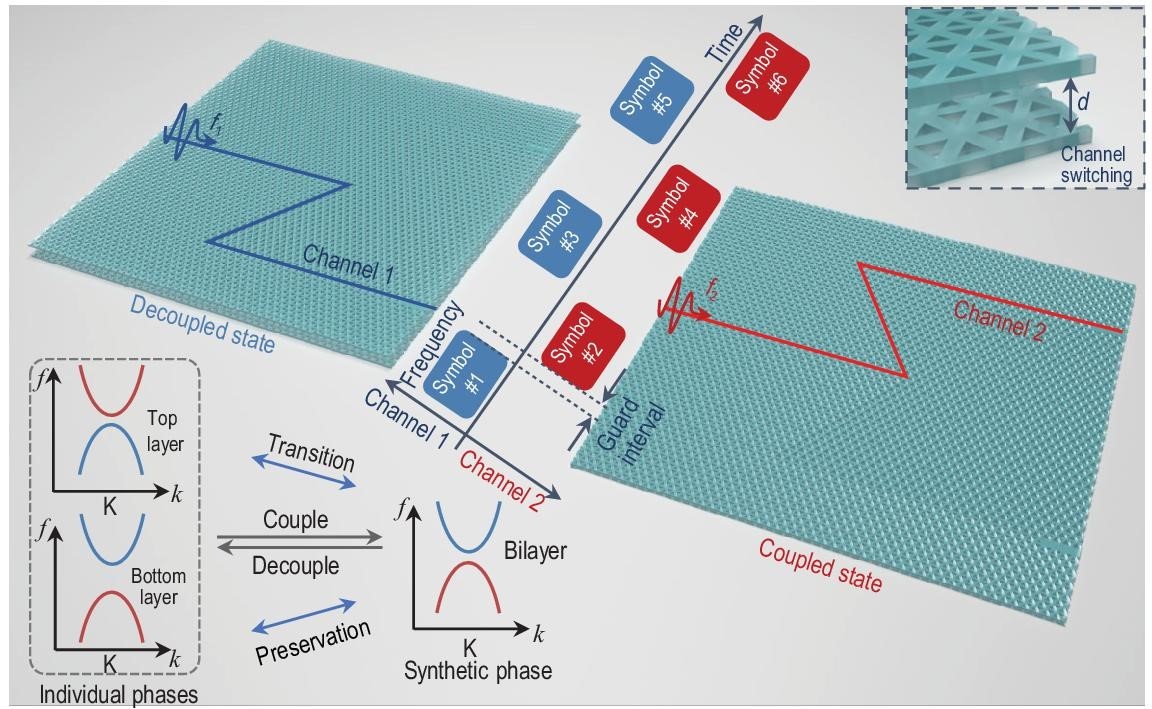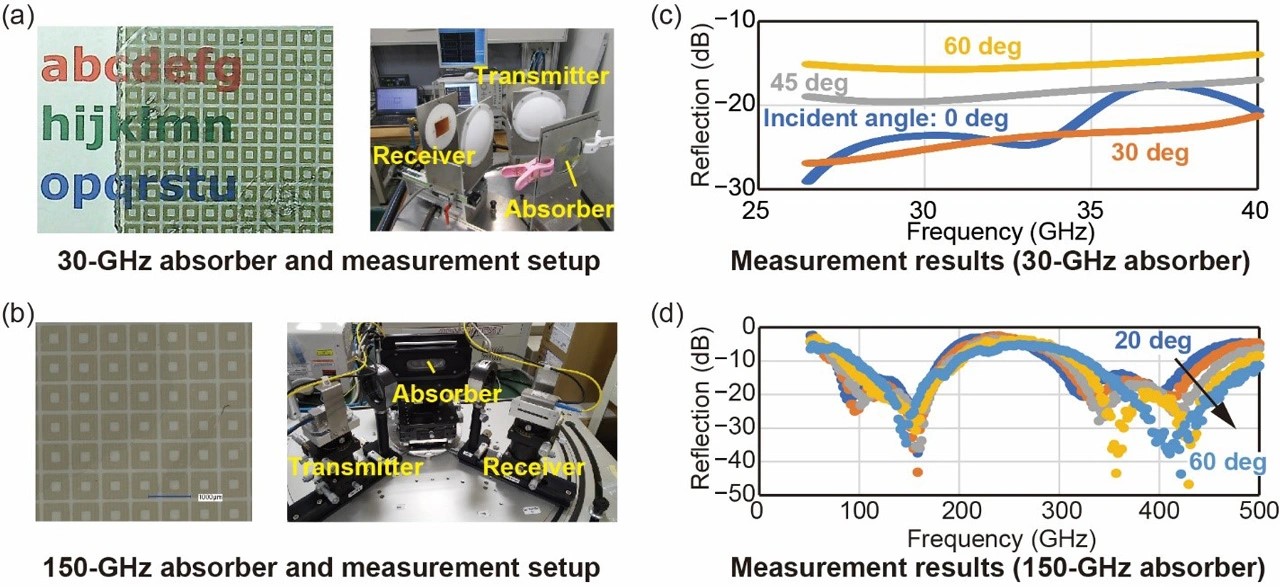Unlocking Terahertz Communication Potential: A Breakthrough in Chip Design
The forefront of modern communication technology is continuously advancing, and a recent study led by esteemed professors Xu, Yu, Han, and Sun [2] sheds light on a promising avenue within this realm. Terahertz frequencies, occupying the space between microwaves and infrared radiation, hold immense potential for applications in cutting-edge fields like 6G communications. Leveraging silicon-based photonics in the terahertz band offers notable advantages such as high transmission efficiency, making it an ideal platform for developing terahertz devices.

Figure 1. The proposed Method.
Figure 1 shows the blue and red rays represent different subchannels over the frequency domain. The subchannel switching is operated at the cost of a temporal guard frame determined by the switching time of interlayer distance d. The insets show the simplified diagram of the energy bands with a TP transition mechanism [1].
In their research, the team proposed a novel chip design methodology based on topological interlayer coupling regulation. This innovative approach utilizes the interlayer coupling strength of bilayer valley photonic crystals to modulate the Hamiltonian of the bilayer topological photonic system [2]. By manipulating the distance between layers, the system's state can be controlled to transition between coupled and decoupled states, thereby adjusting the interlayer coupling Hamiltonian to govern the topological phase transitions of the photonic system. This methodology enables the distribution of topological edge states along different spatial paths before and after phase transitions, facilitating the realization of a flexible multiplexing chip.
To validate the potential application of this technical solution in next-generation communications, the research team conducted pertinent tests on the chip's terahertz communication performance. The multiplexing chip demonstrated impressive capabilities, achieving 10 Gbps and 12 Gbps 16-QAM signal transmissions on two switchable channels operating at 120 GHz and 130 GHz, respectively. These channels boasted available bandwidths of 2.5 GHz and 3 GHz, respectively, showcasing the chip's versatility and effectiveness in on-chip channel manipulation.
This groundbreaking work significantly expands the repertoire of methods for manipulating terahertz on-chip channels, thereby advancing the integration of topological photonics into advanced communication systems and devices. Furthermore, it holds promise for inspiring further exploration into novel physical mechanisms and phenomena within bilayer and multi-layer topological systems.
Source:National Science Review
References:
- https://phys.org/news/2024-05-terahertz-flexible-multiplexing-chip-enabled.html
- https://www.eurekalert.org/news-releases/1043917
Cite this article:
Hana M (2024), Unlocking Terahertz Communication Potential: A Breakthrough in Chip Design, AnaTechMaz, pp. 121















